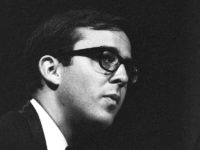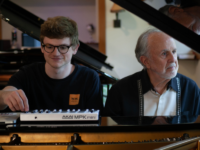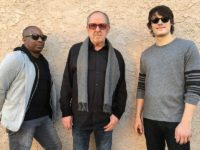Bob James has been a mainstay on the jazz scene since the mid-1970s, despite numerous citations from the jazz police. His keen ear for melody and comfort with a bevy of synthesizers has earned him both accolades and brickbats. Compositions like “Angela” gained him fans while “Nautilus” and “Take Me to the Mardi Gras” are among the most sampled tunes in hip-hop history.
Yet his playing on everything from “Shadow Dance” on Espresso (2018) to “Three Views of a Secret” on Who Loves You: Tribute to Jaco Pastorius (2000) to Roberta Flack’s “Feel Like Making Love” (1975) demonstrates his ability, dexterity and lyricism on piano sans electricity. Which brings us all the way back to 1965, when a young James was just getting his career underway, before the synths and strings and recordings with Grover Washington Jr. and David Sanborn and Fourplay. Back then, he’d embraced the avant-garde scene as well as the mainstream, as he was playing for Sarah Vaughan.
On Once Upon a Time, taken from sessions recorded in 1965 but shelved until now (hence the title), he’s leading a piano trio. Two trios, actually, one for each side of the original record: Robert “Cleve” Pozar (drums) and Larry Rockwell (bass), then Omar Clay (drums) Vishnu “Bill” Woods (bass).
The opening “Serenata” hints at what would become Bob James’s oeuvre: a bright intro leading to a melody, enhanced by Larry Rockwell’s bass. He was already a nimble player, which time has hardly slowed (check Espresso for proof). The title track for Once Upon a Time: The Lost 1965 New York Studio Sessions is more thoughtful, the trio starting at mid-tempo, slowing down, then hinting at a faster pace. But no, it’s stops and starts, pretty much throughout.
“Lateef Minor 7th” is where things really get interesting. It starts out typically enough, with James stating a melody that could be from his contemporary efforts. Pozar’s tapping on the edges of the cymbals hints at what’s to come. By a minute in, James abandons the melody for some tapping of his own on the piano strings. Soon Rockwell drops out to observe the proceedings, with one of the band apparently suggesting tapping “in that key” and adding spoken word phrases at odd times. Rockwell eventually joins in the madness as well, exploring the top end of his bass before sawing away seemingly at random.
This isn’t the only time that happens. The altogether more melodic “Variations” which follows similarly veers into uncharted territory two minutes in, with squeaks and random sounds appearing opposite piano. It’s all very avant garde – hardly the thing a casual listener would expect of present-day Bob James, or even the version from the 1970s and ’80s, all of which eschewed dissonance for hooks and melody.
The second trio fares as well as the first on Once Upon a Time: The Lost 1965 New York Studio Sessions. The gentle “Indian Summer” finds James at his most expressive, though still with a couple of those slightly dissonant chords keeping the listeners on their toes. The jaunty “Long Forgotten Blues,” which concludes the album, offers another taste of his ability to weave tradition into his own creation. That’s also the case for his interpretations of Sonny Rollins’s “Airegin” and Miles Davis’s “Solar.”
The recording quality on Once Upon a Time: The Lost 1965 New York Studio Sessions varies from excellent to average. The piano and bass are sometimes slightly distorted, while the drums can be a bit intrusive. But as a recovered recording from 55 years ago, that’s not unexpected. After all, it’s the performance that is the key, and this delivers on that end as well as showcasing possible directions that Bob James largely eschewed on recordings in favor of a more melodic – and popular – approach. Jazz police be damned.
- Jon Anderson, Reza Khan, CSNY + Others: Ross Boissoneau’s Best of 2024 - December 30, 2024
- Tower of Power, Jennifer Hudson, Ben Folds + Others: 2024’s Seasonal Sounds - November 25, 2024
- Dave Bainbridge of Downes Braide Association: The Albums That Shaped My Career - October 9, 2024




